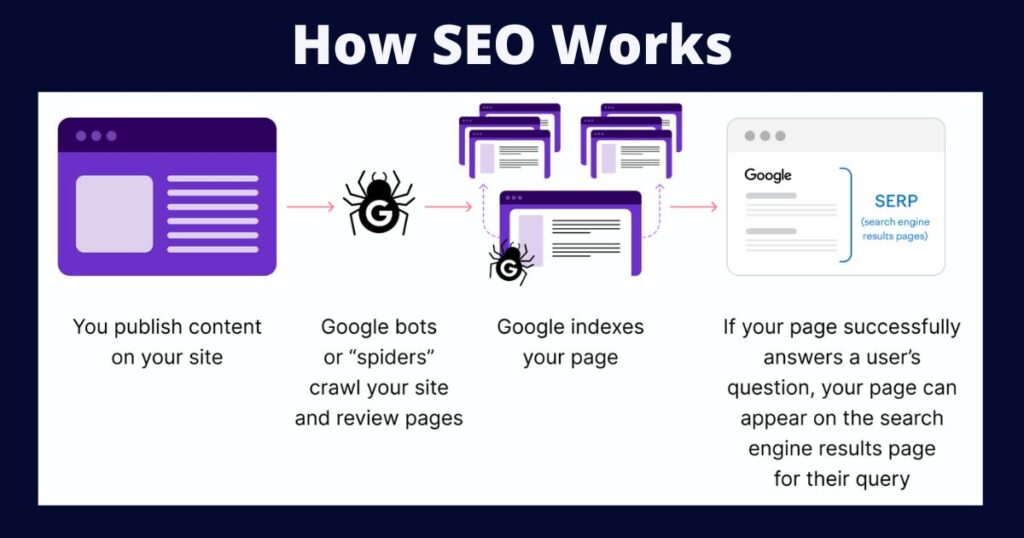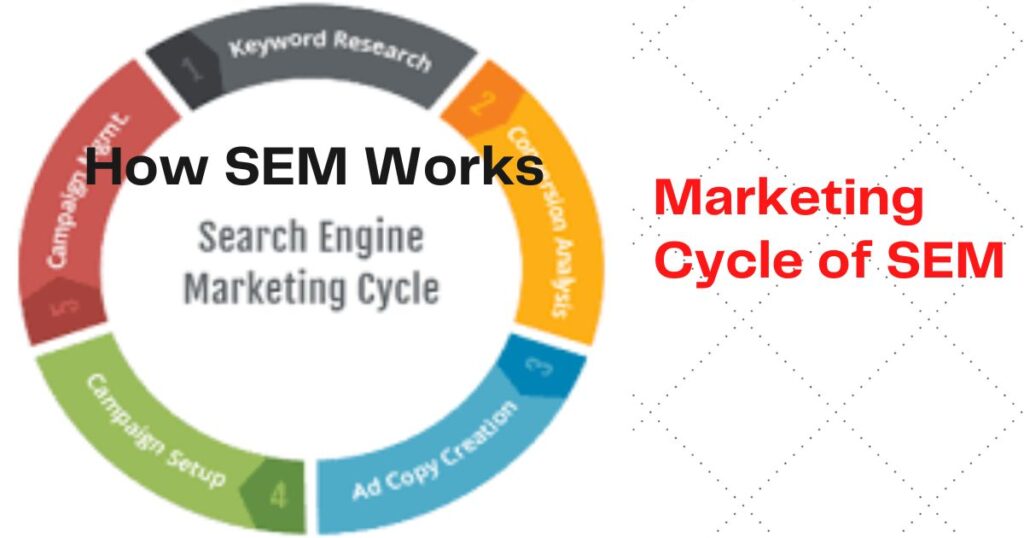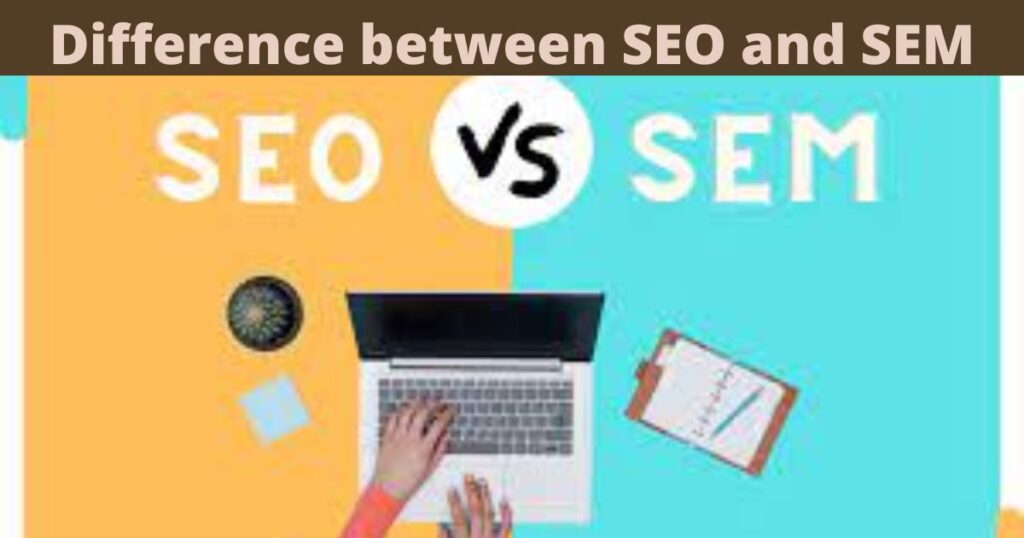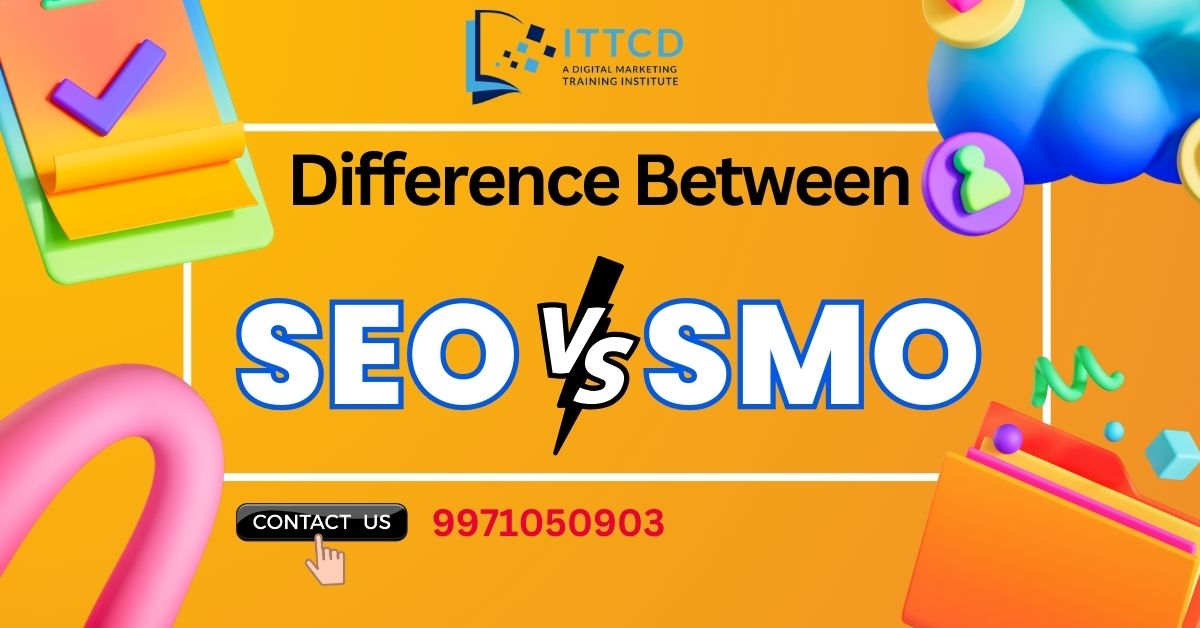Difference Between SEO and SEM – SEM and SEO are commonly used interchangeably. What is SEO and what is SEM in digital marketing, their differences, examples, and how the Key Difference Between SEO and SEM work together will be discussed in this article.
Table of Contents
SEO Definition
The purpose of SEO (Search engine optimization) is to increase the amount and quality of organic traffic to a particular website. SEO (search engine optimization) focuses on getting a high ranking on SERPs (search engine results pages). SEO and other efforts are the only ways to get unpaid web traffic to your website.
There are 3 types of SEO–
On-page SEO
The goal of on-page SEO is to optimize each webpage with specific keywords that will appeal to search engines and users. Your website may not appear in search engine results even if it is well-designed with SEO.
Off-page SEO
Off-page SEO involves SEO activities that take place away from a website’s pages. Building links to other high-quality websites enhances your website’s authority, credibility, and reputation.
Technical SEO
Technical SEO focuses more on the backend and structure of a website rather than content. You get a higher ranking when search engine spiders or crawlers are able to crawl through your website more easily.
SEO: How does it work?
After learning what SEO is, let’s look at how it works. Search engines like Google use bots, also known as spiders or web crawlers, to crawl and index websites. This index is consulted when a user inputs a search. Consider it similar to going to a library to find a particular book (in this case a webpage). We’ll compare the Difference Between SEO and SEM and see how they differ –

Every search engine uses several ranking factors. By crawling through websites, these bots indicate whether a particular webpage meets a user’s needs. It is purely a matter of user experience.
Search engines can rank your pages higher when you use relevant keywords, authoritative pages, and quality content.
An Example of SEO
Examples of SEO strategies include:
- Optimization of keywords
The keywords are the key to SEO marketing success as they determine the success of your campaign. Your webpage’s ranking on a search engine is determined by it. Optimizing your website with the right keywords is essential to generating the most relevant leads.
- Enhancing on-page elements
On-page optimization is another example. A search engine’s title, title tags, description, etc., are among these. Your website’s on-page elements influence its ranking because they determine whether a page is relevant to a search query. We’ll compare the Difference Between SEO and SEM and see how they differ –
- SEO techniques
Technical SEO involves improving your website’s backend. Your website’s ranking will be determined by how well web crawlers crawl your site. Make sure your website loads quickly.
The majority of users will abandon a website if it takes more than 3 seconds to load. You should also ensure that your website is mobile-responsive and user-friendly. More than 50% of internet users use smartphones, so it needs to be designed accordingly.
- Design pages that are user-friendly
Always understand what the user is looking for. As a result, enhance your content. If a user searches for ‘the best restaurants in Mumbai,’ include the keywords on your website to take advantage of this.
- Rich, SEO-friendly content
SEO-rich content is another way to get organic traffic to your website. It includes blogs, videos, infographics, Ebooks, and more. Focus keywords as well as related keywords should be included in the content. As many times as possible, use the main keywords. We’ll compare the Difference Between SEO and SEM and see how they differ –
- Creating links
Another example of SEO is link building – both internal and external. A backlink is a link on another website that points to yours. A high-quality website builds trust and credibility. Traffic will be driven to your page as a result. Your website’s internal links make it easier for users to navigate the internal pages. Your website will also be indexed by Google if you use these. Compare the Difference Between SEO and SEM and see how they differ –
Read Also: Content Management System(CMS)-What is CMS and How does it work?
SEM Definition
Is SEM something you’ve heard of? The term “Search Engine Marketing” refers to any effort to increase your site’s traffic by getting it noticed by search engines.
PPC ads (pay-per-click ads), SMM (social media marketing) and other paid advertising strategies are all part of it. We’ll compare the Difference Between SEO and SEM and see how they differ –
How does it work?
Have you ever wondered how search engine marketing works? In search advertising, you bid on the placement of your advertisements. Over 35% of digital marketers prefer Google Ads, followed by Facebook ads at 20%. For more information, take a look at this Google ad online course and this Social Media Marketing course. We’ll compare the Difference Between SEO and SEM and see how they differ –

As with SEO, you conduct keyword research, followed by creating ads that target your niche keywords to the right target audience.
Your ads will appear in search engines when users search for these keywords. A user clicking on your ad would require you to pay your bid every time they click. In this article, we are reading about the Difference Between SEO and SEM
An Example of SEM
Here are a few examples of SEM strategies:
- Identify your target audience
Understanding your target audience’s search intent is crucial. You can tailor your landing pages and content to meet the user’s needs.
- Make your ads more personalized
Add personalization for desktops and mobiles is a very effective SEM strategy for boosting clicks.
- Enhance your USP
Make your USP known. It goes without saying that you need to emphasize why a user should buy your product or service. What makes it unique? What is its value to a user?
- Paid and organic efforts should be used
You can really boost your recognition and brand awareness by combining organic and paid efforts. The result will be an increased click-through rate, resulting in more traffic and more conversions.
- Create an email campaign
Email campaigns should include a call-to-action that directs users to your website. Don’t forget to personalize your emails. You will achieve better results if you combine Email marketing with SEM.
- Your Ad Success Can Be Tracked
Every time you run an ad campaign, track its performance. Learn how to apply lessons learned to your new. We’ll compare the Difference Between SEO and SEM and see how they differ –
Differences between SEO and SEM
Is SEO the same as SEM? The Difference Between SEO and SEM is that SEO focuses exclusively on organic results, while SEM encompasses both paid and organic strategies. We’ll compare the Difference Between SEO and SEM and see how they differ –

1. The full form of SEO and SEM
The terms SEO and SEM stand for search engine optimization and search engine marketing, respectively.
2. Paid advertising
Organic SEO doesn’t use paid efforts – it is 100% organic. On the other hand, SEM uses paid efforts and ad designations.s is the Main Difference Between SEO and SEM two. It is important to note that SEM is an umbrella term, and many marketers consider SEO to be part of SEM.
3. ROI or value
The long-term return on investment or value of SEO is greater than that of SEM. SEO is a long-term strategy that has unlimited traffic, whereas SEM focuses more on instant results with limited traffic within a budget.
4. The payment process
When a user clicks on your website for SEO, you don’t have to pay. A user must pay for each click on your ad when it comes to SEM. The cost of SEM is, therefore, higher than that of SEO. this blog on the Difference Between SEO and SEM topic.
5. The competition
SEO has a lower level of competition than SEM. SEO’s organic content is less competitive than SEM’s targeted keywords.
6. Results or Impact
Both take different amounts of time to show results. SEO has long-term benefits but takes time to show results, whereas SEM offers instant results.
7. Ratio of clicks
SEO has a higher click-through rate than SEM.
Conclusion
Thanks for reading our blog on the Difference Between SEO and SEM. We hope it helped clear up any doubts you may have. Get in touch with us if you need more information!
Furthermore, you can learn more about SEO and SEM through this specialized online course. This online digital marketing training is your best bet if you are interested in a shorter course. You can learn more about each of these courses by getting in touch with us.
| Follow Us On Google News | Click Here |
| Facebook Page | Click Here |
| Telegram Channel | Click Here |
| Click Here | |
| Website | Click Here |
